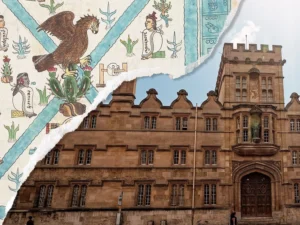In the dry sprawl of California’s Central Valley, where Bakersfield bakes under the sun in anonymity and asphalt, three mothers walked into the public eye with a pain no parent should carry. Theirs was not just a local tragedy, but an indictment of silence, fear, and a justice system that sometimes buckles under its own weight. On Sunday, May 11, The Bakersfield 3: A Tale of Murder and Motherhood premieres on Investigation Discovery, and for many, it will serve as a harrowing introduction to a story that has shaken a city and redefined what it means to grieve in public.
Based on the original Longreads investigation by journalist Katya Cengel—titled “Of Murder and Motherhood”—the three-part docuseries examines the complex, interconnected cases of three young people who vanished or died under disturbing and unresolved circumstances. The common thread? Their mothers. Diane “Di” Byrne, Jane Parrent, and Cheryl Holsonbake have turned loss into advocacy, defiance into solidarity. Their bond has become its own kind of forensic tool—a force of nature too strong to be ignored.
A City’s Dark Corners
The series opens with a portrait of Bakersfield that is anything but idyllic. Long known for its oil derricks, meth trafficking, and economic desolation, the city is no stranger to violence. But the confluence of the three cases in early 2018 created a moral rupture that the authorities could not easily stitch together. First came the murder of 38-year-old James Kulstad, who was gunned down in his car in April 2018. Then the disappearance of Baylee Despot, 20, a woman with a troubled past and tangled associations. Finally, the vanishing—and later confirmation of death—of Micah Holsonbake, 34, whose remains were found in pieces.
For months, authorities appeared slow to connect the dots. And so the mothers did it themselves.
A Mother’s Intuition as Resistance
What The Bakersfield 3 does with stunning clarity is place emotional labor at the center of the investigation. Diane Byrne, in particular, emerges as a relentless presence—one whose pursuit of answers often outpaced that of law enforcement. Jane Parrent, who initially received mixed signals about her daughter’s status, transforms from a grieving mother into a public advocate. Cheryl Holsonbake, meticulous and methodical, treated her son’s disappearance like a case file, logging data and details with the precision of a seasoned detective.
Together, they forged the “Bakersfield 3” moniker—not as a brand, but as a banner. They were not merely mourning mothers. They were caseworkers, communicators, and unofficial investigators. This docuseries refuses to render them as background figures to their children’s tragedies. They are protagonists in a civic drama about accountability, memory, and resilience.
Intertwined Lives and Unfolding Questions
What makes the story of the Bakersfield 3 so gripping is not just the horror of the crimes themselves, but the way their lives intertwined before tragedy struck. James Kulstad and Baylee Despot had been seen together prior to his death. Baylee, in turn, was allegedly connected to individuals suspected of involvement in Micah Holsonbake’s death. These weren’t random acts of violence—they unfolded within a tangled web of relationships, rivalries, drugs, and deeply rooted community mistrust.
The docuseries builds tension not through dramatization, but through layers of unanswered questions. Where is Baylee Despot, who remains missing to this day? Why did it take so long for the investigation to take the women’s concerns seriously? And why, in a city with so much surveillance and so many eyes, does justice still feel just out of reach?
Cinematic Empathy and Journalistic Grit
Director and showrunner Myles Kane, known for previous investigative work in true crime and social justice, directs the episodes with a balanced hand. Interviews are intimate and unflinching. Archival footage, police reports, and personal artifacts are woven in to avoid sensationalism, offering viewers a haunting look at evidence that rarely makes it to screen. The series doesn’t overindulge in reenactments or dramatized voiceovers. Instead, it lets the facts breathe—and it lets the mothers speak.
The influence of Katya Cengel’s original reporting remains strong throughout. Her longform article set the emotional tone, juxtaposing procedural failure with maternal grit. The documentary expands on her work with visual immediacy, using voiceovers and excerpts from her notes to reinforce how deeply embedded this story has become in the lives of its narrators.
What Justice Looks Like Now
In the years since 2018, there have been some developments. Micah Holsonbake’s remains were partially discovered in a Bakersfield freezer, leading to the arrest of Matthew Queen—an alleged associate of Despot—in connection with the killing. Queen was convicted in 2022, but the case remains incomplete. Baylee is still missing, and the full truth behind the deaths and disappearances remains elusive.
Yet the series is less concerned with courtroom closure than with the emotional contours of what justice feels like for those left behind. Justice, for these women, is not simply a verdict—it’s a voice. A platform. A refusal to let their children be buried in bureaucracy and indifference.
A Portrait of Grief that Resists Quiet
The Bakersfield 3: A Tale of Murder and Motherhood lands at a time when true crime often teeters between voyeurism and advocacy. This series makes a conscious choice to center the mothers—not as passive victims of circumstance, but as active forces of reckoning. Their grief is not a plot device. It is the plot.
What sets this story apart is not just the horror, but the humanity. These are women who turned their pain into purpose, who walked into police stations, city council chambers, and newsrooms and demanded to be heard. Who connected the dots when no one else would. Who turned heartbreak into heat.
The Power of Refusal
When the first episode of The Bakersfield 3 airs, it won’t offer easy answers or wrapped-up endings. Instead, it will offer something more essential: testimony. It will serve as a record of mothers who refused to be statistics, of lives interrupted but not forgotten, of a city that must reckon with the stories buried beneath its streets.
In a landscape cluttered with algorithm-driven thrillers and rehashed procedural dramas, this series stands apart. It honors the messiness of grief, the necessity of outrage, and the power of community. In telling the story of Diane, Jane, and Cheryl, it reminds us that motherhood is not just about protection—it is also about perseverance. And sometimes, it’s about refusing to let the world move on.
No comments yet.








